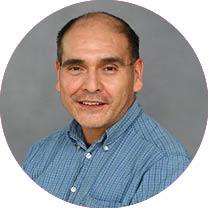Delivering his annual State of the City address in downtown San Antonio, Mayor Ron Nirenberg said April 11 the city has made progress on issues such as boosting workforce development, affordable housing and transportation.
But Nirenberg, who is running for a fourth and final term in the May 6 election, said he looks forward to leading San Antonio for another two years and further addressing initiatives related to economic mobility, transit, public safety, and long-term power and water supplies.
The San Antonio Chamber of Commerce partnered with the San Antonio Hispanic Chamber of Commerce, the Alamo City Black Chamber of Commerce, and the Alamo Asian American Chamber of Commerce to present the State of the City luncheon at the Henry B. Gonzalez Convention Center.
Economic talk
According to Nirenberg, while many people feel the lingering effects of the COVID-19 pandemic, much of San Antonio’s economy has rebounded, resulting in steady continued job growth, enhanced workforce development and efforts to reduce property owners’ tax burden.
“While the rebound has not been smooth for everyone, San Antonio racked up a 46% increase in gross domestic product from 2017-2023, and the Kenan Institute of Private Enterprise has projected that San Antonio’s economy will be the fifth fastest growing of any city in the nation this year,” Nirenberg said.
Nirenberg said San Antonio’s unemployment rate is slightly above 4% even as the Texas Workforce Commission reported the local total labor force has risen by more than 35,000 workers since February 2022.
Nirenberg thanked the City Council for passing a balanced fiscal year 2023 budget with an equity framework, which the mayor said allows more funding for workforce development, infrastructure improvements and other budget matters that more directly affect residents.
Nirenberg also applauded council increasing the city’s homestead exemption from less than 1% to 10%, raising the over-65 property tax exemption from $65,000 to $85,000 and growing the disabled exemption from $12,500 to $85,000. He added the council also dropped the total property tax rate by $0.0167.
“The City Council also approved returning $50 million in credits to CPS Energy ratepayers, and we approved a [San Antonio Water System] rate restructure that will lower monthly water bills for 83% of residential customers,” he added.
Housing
Nirenberg said expanding affordable housing options citywide remains a top priority for his administration. He said a 10-year Strategic Housing Implementation Plan and part of the $1.5 billion 2022 city bond are supporting development of thousands of affordable housing units as well as the preservation of existing affordable housing.
He added San Antonio was the first among 100-plus cities in President Joe Biden’s House America effort to meet its goal of rehousing 1,500 households between November 2021 and December 2022 in larger efforts to reduce homelessness.
“Our work to move people off the streets will continue and be further accelerated by the $25 million included in the housing bond for permanent supportive housing to help people exit homelessness for good,” he said.
Transportation
Nirenberg promoted other initiatives, such as city staff unveiling preliminary designs ahead of a $2.5 billion improvement project at the San Antonio International Airport, where a new terminal is the featured addition.
Calling it San Antonio’s biggest capital project yet, Nirenberg said an expanded, improved airport should lure more direct flights, be more accessible to business travelers, and showcase the city’s history and culture.
“The airport project is a transformational move forward for San Antonio—a move that demonstrates to the world where San Antonio is headed,” he said.
Nirenberg also said VIA Metropolitan Transit is developing its planned North-South Advanced Rapid Transit line, and the city is growing its Howard W. Peak Greenway Trails system with help from the city’s 2022 bond package.
“We're going to continue to build these trails. We're going to complete the ring. We're going to bring equity and access so that every part of town enjoys these trails,” he said.
Workforce development
Nirenberg said despite criticism from council and mayoral candidates and other community members, the Ready to Work program is slowly becoming an important platform to train people for certain high-paying jobs. He added nearly 13,000 people have applied for the Ready to Work program since enrollment began last May.
“Workforce development is not easy work. Launching the Ready to Work program has been a complex task, but I am encouraged by the demand for training,” he said.
City's power supply
Nirenberg said the city strives to secure reliable, affordable energies to power the city’s growing population. He pointed to CPS Energy’s vote in January to commit to a mix of energies, including expanding reliance on natural gas, wind and solar capacity as well as closing the Spruce I coal plant by 2028, further reducing carbon emissions.
“We will leave coal behind by 2028,” he said.
Public safety
Nirenberg also said public safety remains a core city mission with nearly two-thirds of the FY 2023 budget dedicated to police and fire protection. He added the city is funding new police officer positions, adding neighborhood substations, improving the police training manual and increasing accountability.
“We created a violence prevention district within the Metro Health department, added resources to address domestic violence incidents and provided additional funds to support our community’s mental health services,” he added.






